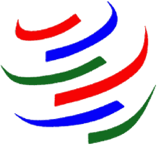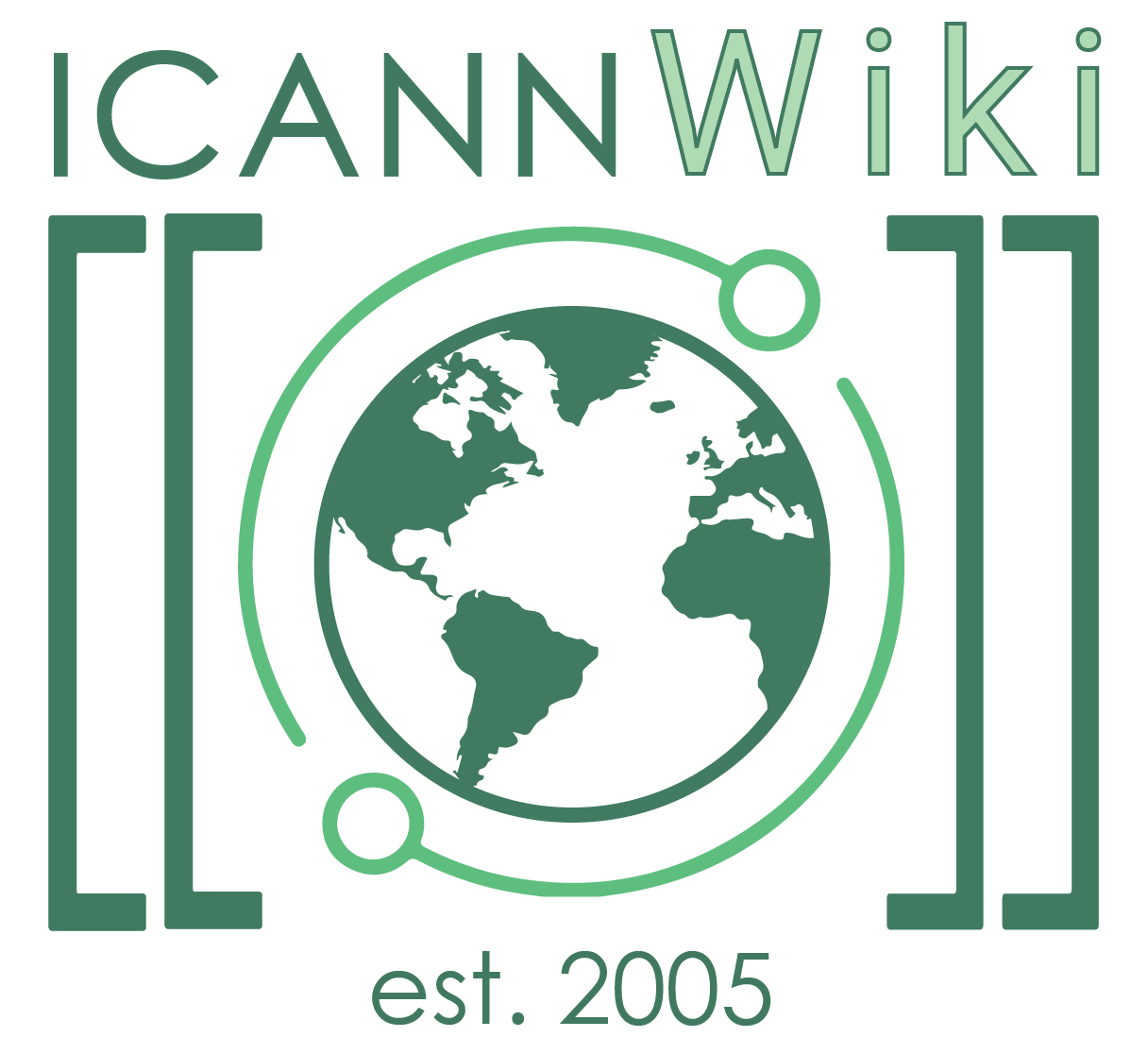World Trade Organization
| Organization | |
|---|---|

| |
| Region | EUR |
| Country |
|
| City | Geneva |
| Founded | 1995 |
| Websites | |
The World Trade Organization (WTO) is a coalition to supervise and liberalize international trade. Any dispute over trade between member countries is brought before the WTO and is solved through a series of negotiations. The organization is driven by its members, and all decisions are made by member governments.[1] The agreements signed by various nations under WTO play an important role when forming laws and policies related to international trade.
History
- The World Trade Organization supplanted GATT, or the General Agreement on Tariffs and Trade, which was signed into law in October 1947 by 23 countries in order to reduce custom tariffs between them.
- Proposals for the establishment of an International Trade Organization was forward by delegates from fifty-six countries in November, 1947 in Havana, Cuba.
- In 1982, a failed meeting of the GATT resulted in the preliminary foundation of a new trade organization; this was the beginning of the Uruguay Round. Thus, the GATT slowly built up its scope, and 7 years later it had effectively become the WTO. The process was slow, and the situation often quite bleak.[2] During the early 1980s, the world powers did not find GATT’s principles as applicable to the realities as they used to find them in the 1940s.[3]
- In 1986, the GATT members gradually accepted the negotiating program that enclosed almost all the outstanding issues of the trade policy.
- In 1988, the agenda for the remaining two years was discussed.
- On January 1, 1995, the World Trade Organization was established.[4]
- From 1947 until 1994 GATT acted as the provider of rules for most of the trading houses all over the world. Although it seemed to be well established for those 47 years, it was actually a provisional organization and agreement. So, the GATT’s fundamental official principles were almost the same since the time it was established. In fact, there were few additions in the 1960s and 1970s to reduce the tariffs.[5]
- The number of member states in the WTO grew 150 when Vietnam became a member on January 11, 2007. Presently it has 153 member states.[6][7]
- The first Ministerial Conference was held in 1996 in Singapore.[8]
Trading System Principles
The principles of WTO agreements are the basis of mutual trading arrangements that occur between traders who deal with textiles, agriculture, telecommunications, banking, etc. They are:
Trade sans discrimination
Countries should treat each and everyone equally. There should be no discrimination and no country should get extra favor from some other country. Local and imported goods must be considered one and the same.
Freer trade
Including the lowering of custom duties and tariffs.
Predictability
Binding deals and transparency in the trades make it more predictable and hence increase the benefits.
The case for Open Trade
The case designed for open trading system is very simple and is based on some logical commercial sense. It is logical to assume that all countries grow according to the assets they have and the utilization of their assets. Some countries have assets but they do not have the means to utilize them. Some have over-utilized their assets.
So, open trade practice makes it possible for countries to share their strengths as well as weaknesses so that both of them grow and prosper. Hence, freer trade leads to better economic growth.
The Uruguay Round
The Uruguay Round was a turning point as the world trading system saw some major reforms. It saw some results very early and within two years, the participants agreed that they would implement a cut package on import duties on the tropical products, exported mainly by the developing countries. Rules to settle disputes were also revised and measures were taken to implement them on the spot. To make the trade regimes transparent they suggested that GATT members submit regular reports on their trade policies.[9]
The Uruguay Round’s seeds were sown at the Geneva meeting in November, 1982. The meeting was a failure, but its work programme became the agenda for the Uruguay Round, which was held in Punta del Este, Uruguay in 1986. The negotiation was to extend the present trading system to include trade in intellectual property and services, and to bring about reforms in the sectors of textiles and agriculture.
Another meeting was held by the ministers in December, 1988 in Montreal, Canada to assess the progress and to elucidate the agenda, but it ended in a deadlock with no proper solutions. They met again in Geneva in April, 1989 and resolved the matters. The ministers met again in December, 1990 in Brussels to end the Round, but the talks were extended to reform the agricultural trade. The political approach seemed to be poor, but the technical work was taken up at a good pace in the subsequent year, and the Final Act was tabled in the year 1992, by Arthur Dunkel, who was the Director General of GATT.[10]
The following two years were full of successes and failures. The key point was the differences between the European Union and the United States. In 1992, almost all the major differences between the United States and the European Union were settled, in a deal best known as the “Blair House Accord”. By the end of 1993, almost all the issues like market access, services and goods were resolved, and in April 1994, a meeting was held in Morocco, and a deal was signed by around 123 countries.[11]
GATT was replaced by WTO, but General Agreement did not become obsolete.
Functions
The World Trade Organization performs a variety of functions, including:[12][13]
Trade Negotiations
The organization plays an indispensable role in the area of trade negotiations, and the agreements signed by the WTO deal with goods, intellectual property, and other materials. Exceptions that are permitted during the international trade are also mentioned in these agreements. An important feature of these agreements is that they are not static. The organization continuously revises the terms and conditions mentioned in the agreement such that they are better suited to the changing needs and requirements of countries participating in international trade.[14][15]
Monitoring and Implementations
The WTO agreements lay down rules and conditions for member countries. The country is not only responsible for formulating laws but it also monitors whether the companies are following them properly or not. Periodically, the organization makes a check on members and ensures that each of the laws is implemented to the best extent possible.
Settlement of Disputes
In order to make sure that international trade takes place smoothly, the organization performs the function of dispute settlement as well. if any of the member companies experience problem while carrying out trade then they can bring the matter to the WTO without giving a second thought. The organization has appointed some experts who can carry out this task efficiently.[16][17]
Reaching Out
The organization does not work by keeping itself isolated from other firms in the market; instead, the organization maintains contact with non-government organizations and media such that it can stay aware of happenings taking place in different parts of the world. Moreover, it helps the organization in fetching support whenever required.
The organization plays a key role in improving trade capacity of member countries as well.
References
- ↑ BBC News-Profile: World Trade Organization
- ↑ WTO.org
- ↑ The GATT years: from Havana to Marrakesh
- ↑ BBC News-Profile: World Trade Organization
- ↑ The GATT years: from Havana to Marrakesh
- ↑ BBC News-Profile: World Trade Organization
- ↑ WTO-Members and Observers
- ↑ CRS Report for Congress-The World Trade Organization: Background and Issues
- ↑ The Uruguay Round
- ↑ The Uruguay Round
- ↑ The Uruguay Round
- ↑ iisd.org
- ↑ CRS Report for Congress-The World Trade Organization: Background and Issues
- ↑ iisd.org
- ↑ CRS Report for Congress-The World Trade Organization: Background and Issues
- ↑ iisd.org
- ↑ UNDERSTANDING THE WTO: SETTLING DISPUTES
ICANNWiki resources: Special Pages | Content Guide | Documentation | Development || Maintenance: Articles needing attention | Candidates for deletion || Projects: Internet & Digital Governance Library
